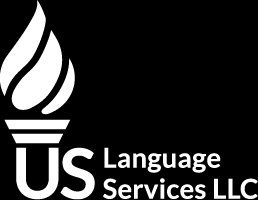How to Work in the U.S. As a Foreign-Educated Veterinarian

Veterinary medicine is a difficult, but well-respected, career, and many individuals working as veterinarians in the U.S. today find this profession highly rewarding. In the United States, veterinarians experience job security and decent pay, with the U.S. Bureau of Labor Statistics stating that pay for veterinarians ranges between $60,760 and $165,600; the annual median wage for this profession is $100,370. If you received your veterinary education outside of the United States, you might be wondering if it is possible to move your profession to the States. Our guide will give you essential information about this process and answer important questions such as:
- What Is the Process for Working in the U.S. As a Foreign-Educated Veterinarian?
- How Much Does It Cost to Work as a Foreign-Educated Veterinarian in the U.S.?
- How Long Does It Take To Work as a Foreign-Educated Veterinarian in the U.S.?
- Are There Any Restrictions to Working as a Foreign-Educated Veterinarian in the U.S.?
- What Are the State-Specific Requirements for Foreign-Educated Veterinarians?
- What Are the Immigration Requirements for Foreign-Educated Veterinarians?
- Where Can I Get a Certified Translation?
What Is the Process for Working in the U.S. As a Foreign-Educated Veterinarian?
This process includes making sure your foreign credentials meet U.S. standards for veterinarians, passing examinations as needed, and meeting state licensing requirements. It’s important to note that states do handle the licensing of veterinarians on an individual basis, so you should decide which state you wish to practice in before reviewing the general steps of this process. The steps to becoming a foreign-educated veterinarian in the U.S. include the following:
- Ensure your foreign credentials meet U.S. education standards for veterinarians by completing a certification program for internationally trained veterinarians. There are two main programs for this, the American Veterinary Medical Association’s Educational Commission for Foreign Veterinary Graduates (ECFVG) certification program and the American Association of Veterinary State Boards’ Program for the Assessment of Veterinary Education Equivalence (PAVE). You must check with the state licensing board where you wish to work to determine which program is primarily accepted in that state.
With both the ECFVG and the PAVE, you will be required to submit an application for the certification, take exams to show your scientific and surgical knowledge, and submit proof of English language ability via scores from the Test of English as a Foreign Language (TOEFL) or the International English Language Testing System (IELTS). Review the details of each program for more specific instructions about the steps to complete and which documents you are required to submit.
- Once you have completed either the ECFVG program or the PAVE, you must take the North American Veterinary Licensing Examination (NAVLE). All states and U.S. jurisdictions require this exam for individuals that wish to be licensed and work independently as a veterinarian.
- After you have passed the NAVLE, you will need to consult with your chosen state’s veterinary licensing board for specific licensing details. In most states, you will need to submit proof of your ECFVG or PAVE completion, your English language proficiency, and your NAVLE scores in addition to completing state-specific exams and paying licensing fees. The American Veterinary Medical Association provides a directory of all state veterinary licensing boards so you can easily access this important information.
- The final step in this process is ensuring that you have obtained the proper immigration documents to move to the United States and work. Because the immigration process tends to be long, you may want to start this as you begin applying for the ECFVG or the Pave when possible to ensure you can become a foreign-educated veterinarian in the U.S. without too much delay.
How Much Does It Cost to Work as a Foreign-Educated Veterinarian in the U.S.?
The process for working in the U.S. as a foreign-educated veterinarian is not inexpensive, and it includes the cost of your ECFVG program or the PAVE, the cost of the NAVLE, and state licensing fees. You must also factor in the costs of the immigration process, which tends to be several thousand dollars – more if you need to consult legal immigration assistance. The ECFVG certification program costs $2,125 and the PAVE costs $1,875, not including any preparation, testing, or additional materials you may need. The NAVLE is $740 plus an additional $355 fee if you are taking the exam internationally, and the TOEFL or IELTS will be a few hundred dollars to register for, not including preparation materials. On average, immigration costs several thousand dollars in application fees, and legal consultations may be another few hundred or thousand dollars depending on your situation. Overall, you should expect to pay at least $5,000 to complete this process.
How Long Does It Take To Work as a Foreign-Educated Veterinarian in the U.S.?
Becoming a foreign-educated veterinarian in the United States may take several years to achieve due to all of the steps you must complete. Immigration is the longest part of this process and tends to take between one and two years, depending on the type of visa or green card you are applying for. Completing the ECFVG or PAVE may take between four months and two years to complete, depending on your foreign credentials, how long it takes you to complete the required examinations, and the programs’ other required steps. The NAVLE takes on average four to six months to study for and pass, and state licensing may take another month or so as you gather all your documents and submit your application. In general, expect this process to take between 2 and 4 years.
Are There Any Restrictions to Working as a Foreign-Educated Veterinarian in the U.S.?
Once you have met all basic U.S. education and examination requirements, received your PAVE or ECFVG certification, and obtained a license to practice as a veterinarian in your chosen state, you can practice as a veterinarian in the U.S. without restrictions. Make sure that you keep up to date with immigration requirements and ongoing state licensing requirements, such as continuing education, so that your practice in the U.S. continues without interruption.
What Are the State-Specific Requirements for Foreign-Educated Veterinarians?
States handle the licensing of veterinarians individually, and it’s a good idea to know which state you’d like to work in as you start this process. You will need to consult with your state’s veterinary licensing board directly for specific application instructions and licensing requirements, but every state does have a general set of items you might be required to obtain. Before you are eligible to apply for a veterinary license in your chosen state, you will need either the PAVE or ECFVG certification for internationally trained individuals. You will need to complete all examinations that are a part of these exams in addition to completing state-specific veterinary exams; all states require that potential veterinary candidates take the NAVLE, but you may also need to complete state ethics exams. After completing your state’s requirements, you may need to provide proof of your English language skills via TOEFL or IELTS exam results. Most states also require you to submit proof of your eligibility to legally work in that state and pay a licensing fee. Make sure you stay informed of ongoing state licensing requirements such as continuing education credits and licensing renewal fees.
What Are the Immigration Requirements for Foreign-Educated Veterinarians?
Foreign-educated veterinarians have several options to choose from when it comes to immigrating to the United States. Depending on your specific situation, you may be eligible to apply for the H-1B visa for specialty occupations, employment-based visas for skilled workers, or the TN NAFTA Professionals visa. You might be able to obtain one of these visas in advance and work towards applying for a green card, also known as a permanent resident card, that lets you live and work in the United States indefinitely. If you have questions or concerns about this process, don’t hesitate to contact a legal professional for guidance with immigrating to the U.S.
Where Can I Get a Certified Translation?
Certified translations are an essential part of becoming a foreign-educated veterinarian in the United States. You will need to produce original academic transcripts and certifications, among other important documents, as you apply for various certifications, state licensing, and even as part of the immigration process. To receive an accurate and reliable certified translation of your items, visit our online store. We translate important documents such as:
- Diplomas
- Academic transcripts
- Business licenses and certifications
- Resumes and employment records
- Birth certificates
Guaranteed Acceptance
All our certified to English translations are accepted by the USCIS. Our translations follow the guidelines established by the USCIS and are also accepted by educational institutions.
Most Requested Documents
FAQs
You can order most translations 24 hours a day, 7 days a week through our online store. For large projects (more than 20,000 words or 50 pages), please request a quote.


